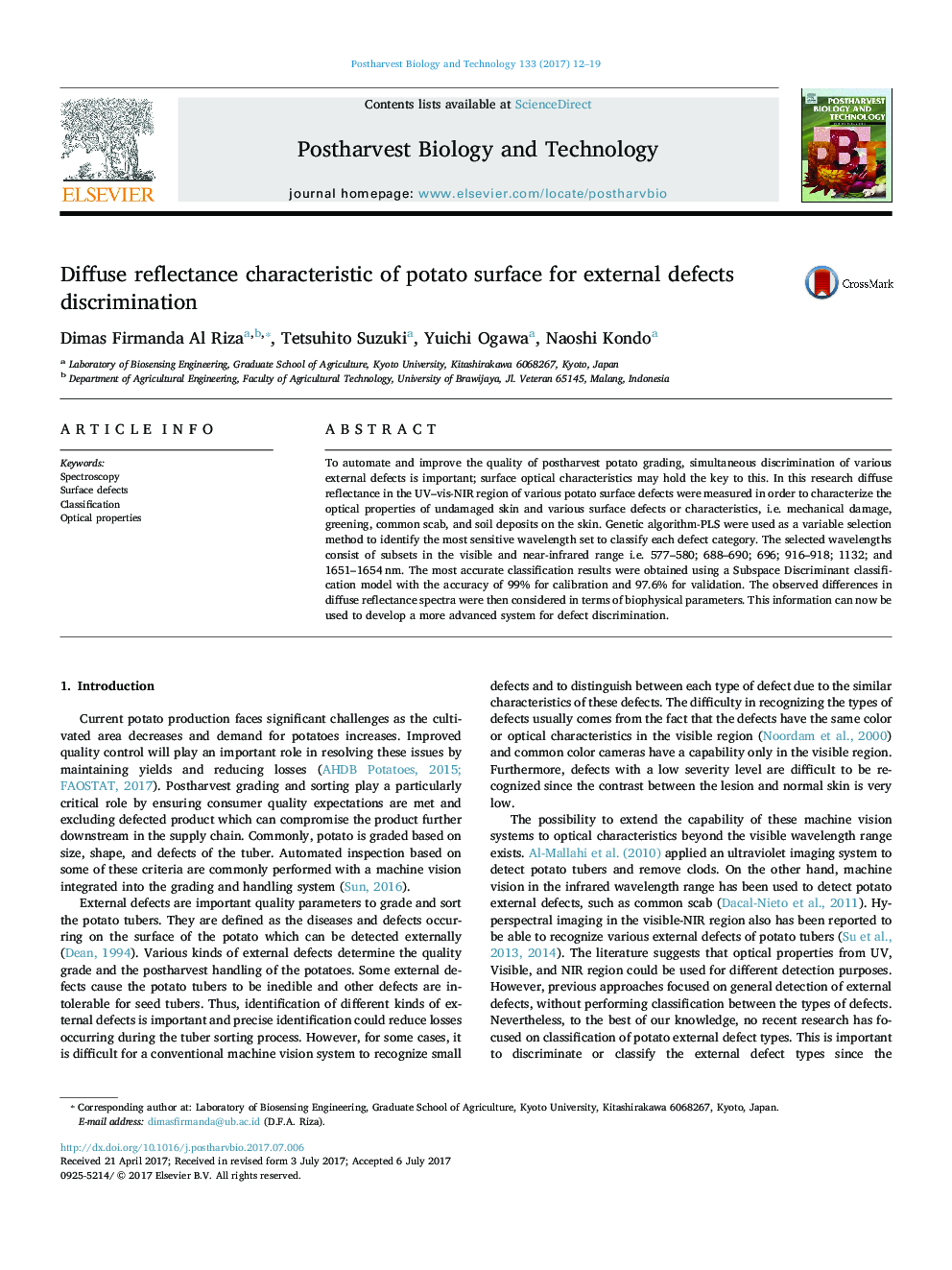| Article ID | Journal | Published Year | Pages | File Type |
|---|---|---|---|---|
| 5762643 | Postharvest Biology and Technology | 2017 | 8 Pages |
Abstract
To automate and improve the quality of postharvest potato grading, simultaneous discrimination of various external defects is important; surface optical characteristics may hold the key to this. In this research diffuse reflectance in the UV-vis-NIR region of various potato surface defects were measured in order to characterize the optical properties of undamaged skin and various surface defects or characteristics, i.e. mechanical damage, greening, common scab, and soil deposits on the skin. Genetic algorithm-PLS were used as a variable selection method to identify the most sensitive wavelength set to classify each defect category. The selected wavelengths consist of subsets in the visible and near-infrared range i.e. 577-580; 688-690; 696; 916-918; 1132; and 1651-1654Â nm. The most accurate classification results were obtained using a Subspace Discriminant classification model with the accuracy of 99% for calibration and 97.6% for validation. The observed differences in diffuse reflectance spectra were then considered in terms of biophysical parameters. This information can now be used to develop a more advanced system for defect discrimination.
Related Topics
Life Sciences
Agricultural and Biological Sciences
Agronomy and Crop Science
Authors
Dimas Firmanda Al Riza, Tetsuhito Suzuki, Yuichi Ogawa, Naoshi Kondo,
